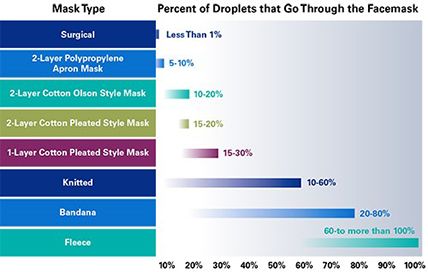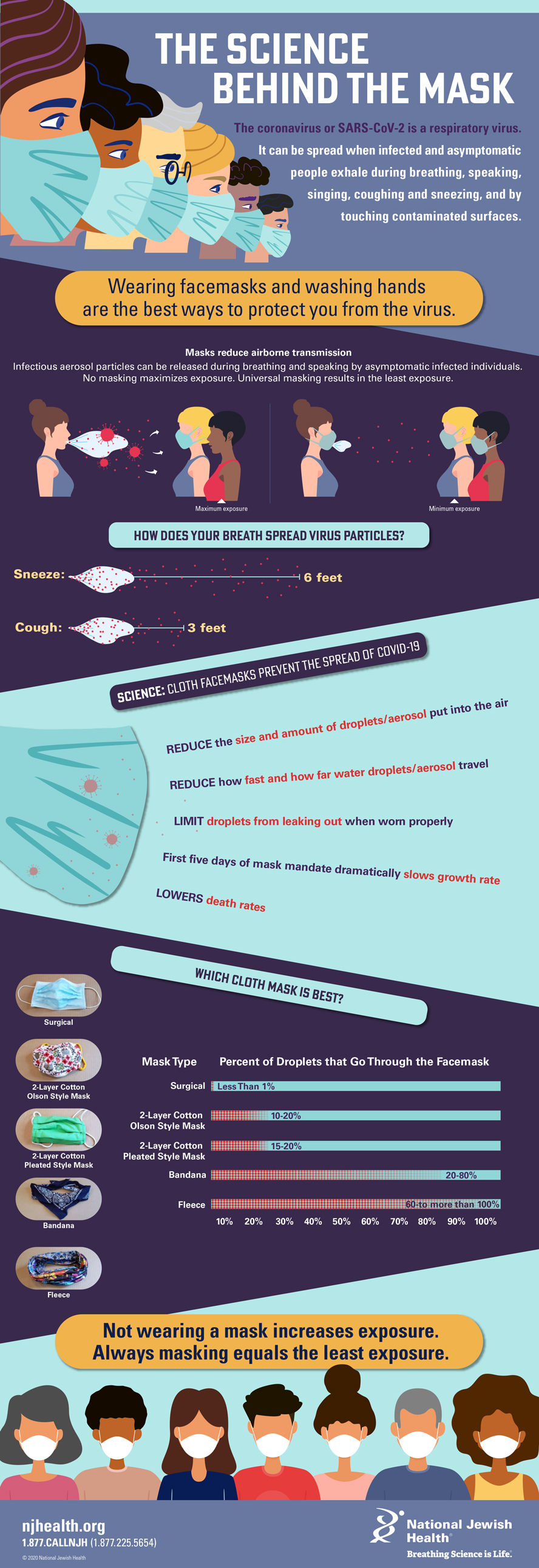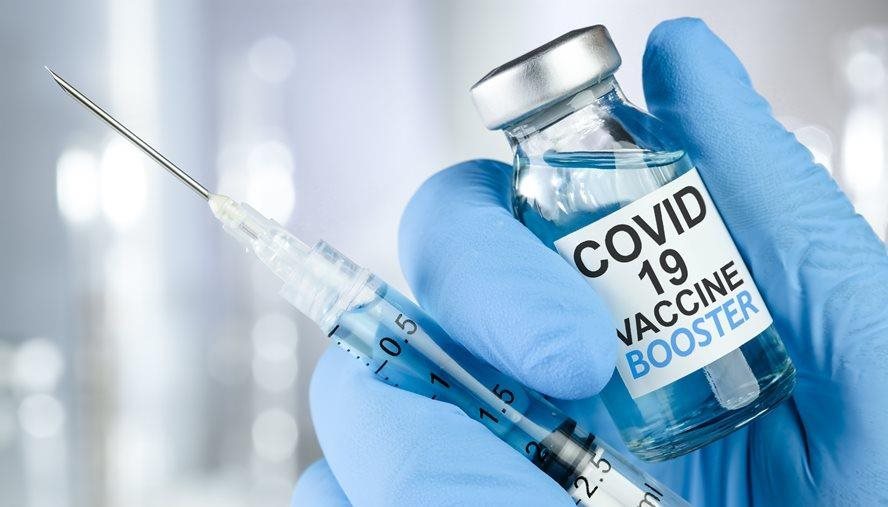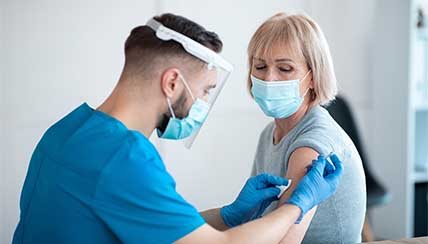The Science Behind the Mask
This information has been reviewed and approved by Lisa Maier, MD and Rosine Angbanzan, MPH (February 2022)
The Science Behind the Mask
The coronavirus or SARS-CoV-2 is a respiratory virus. It can be spread when infected and asymptomatic people exhale during breathing, speaking, singing, coughing and sneezing, and by touching contaminated surfaces.
Wearing facemasks and washing hands are the best ways to protect you from the virus.
How Does Your Breath Spread Virus Particles?
Masks reduce airborne transmission
Infectious aerosol particles can be released during breathing and speaking by asymptomatic infected individuals. No masking maximizes exposure, whereas universal masking results in the least exposure.
- Cough: Can spread particles almost 3 feet
- Sneeze: Can launch particles more than 6 feet
Science: Cloth Facemasks Prevent the Spread of COVID-19
- Reduce the size and amount of droplets/aerosol put into the air
- Reduce how fast and how far water droplets/aerosol travel
- Limit droplets from leaking out when worn properly
- First five days of mask mandate dramatically slows growth rate
- Lowers death rates
Which Cloth Mask is Best?

Not wearing a mask puts people at the highest risk of catching an infection.
No mask means no protection.
Wearing a Respirator
NIOSH-approved respirators like KN95s and N95s offer the highest degree of safety from COVID-19 infection. When properly worn, they provide protection against airborne particles, including the virus that causes COVID-19. They also prevent your respiratory droplets and particles from escaping. According to the CDC, these masks filter at least 95% of particles. However, you shouldn’t wear a respirator if you’re having trouble breathing.
Additional Information
Want to use this on your website? Fill out the content usage request form and then copy this code:
| The information on our website is medically reviewed and accurate at the time of publication. Due to the changing nature of the COVID-19 pandemic, information may have since changed. CDC.gov and your state’s health department may offer additional guidance. |



